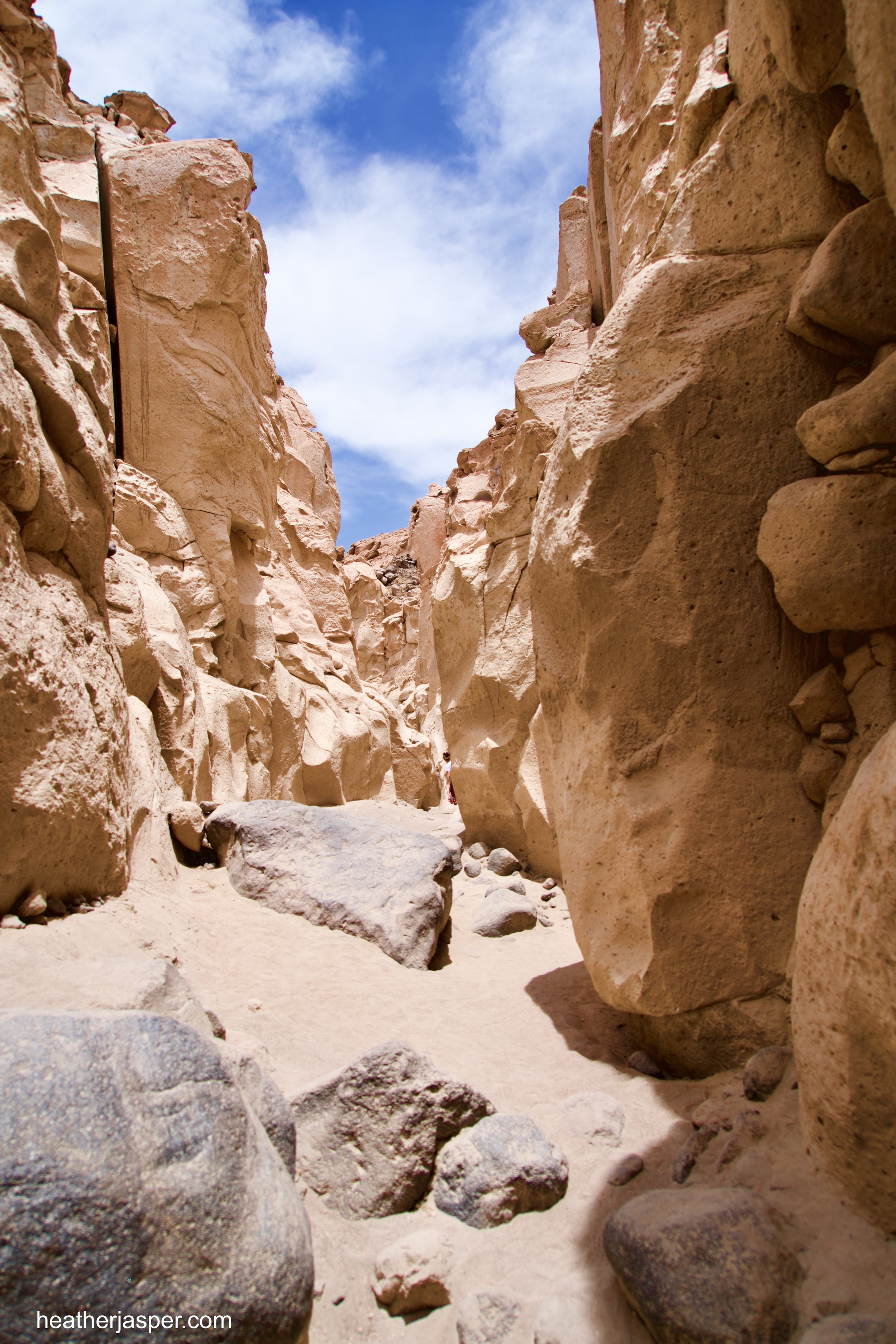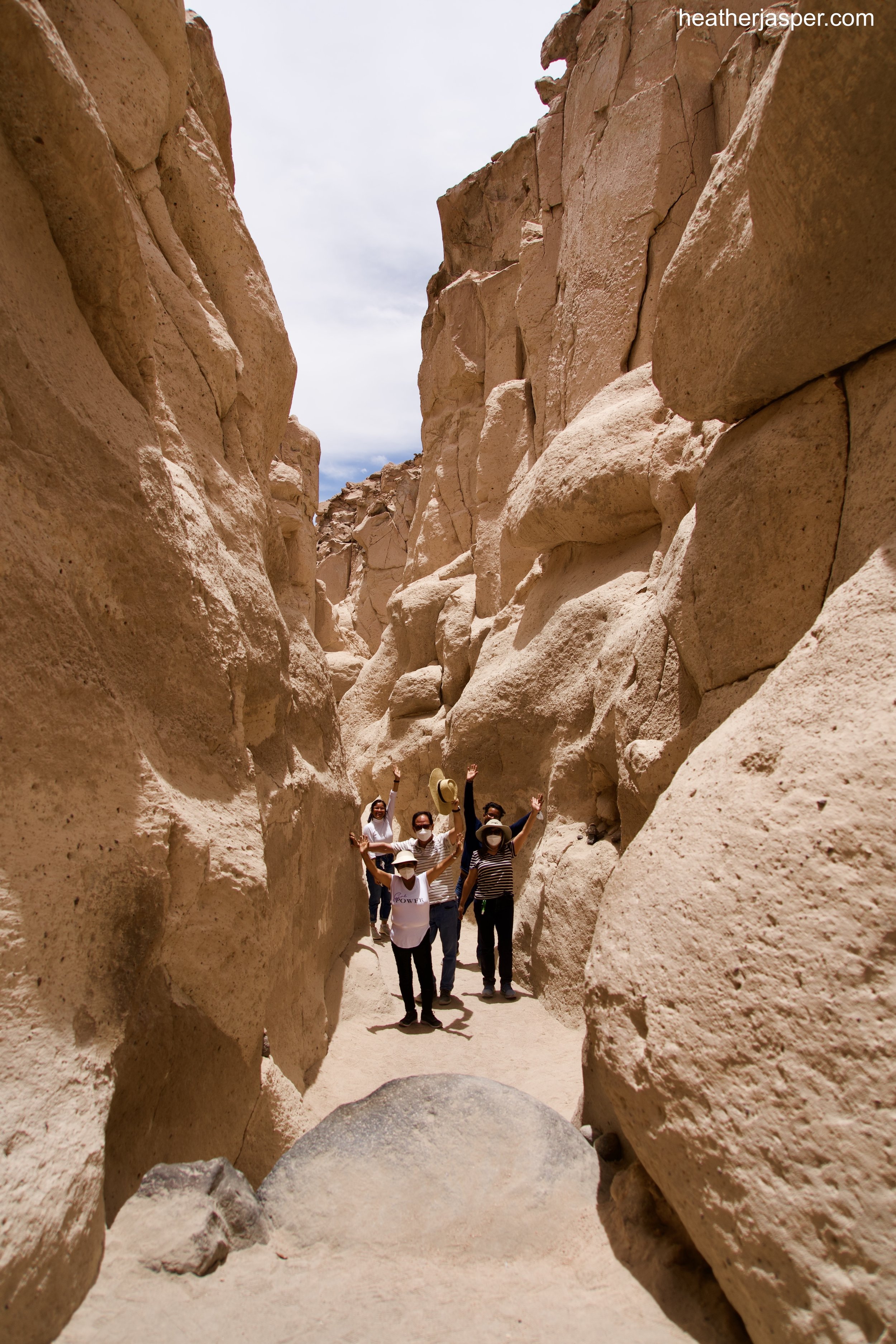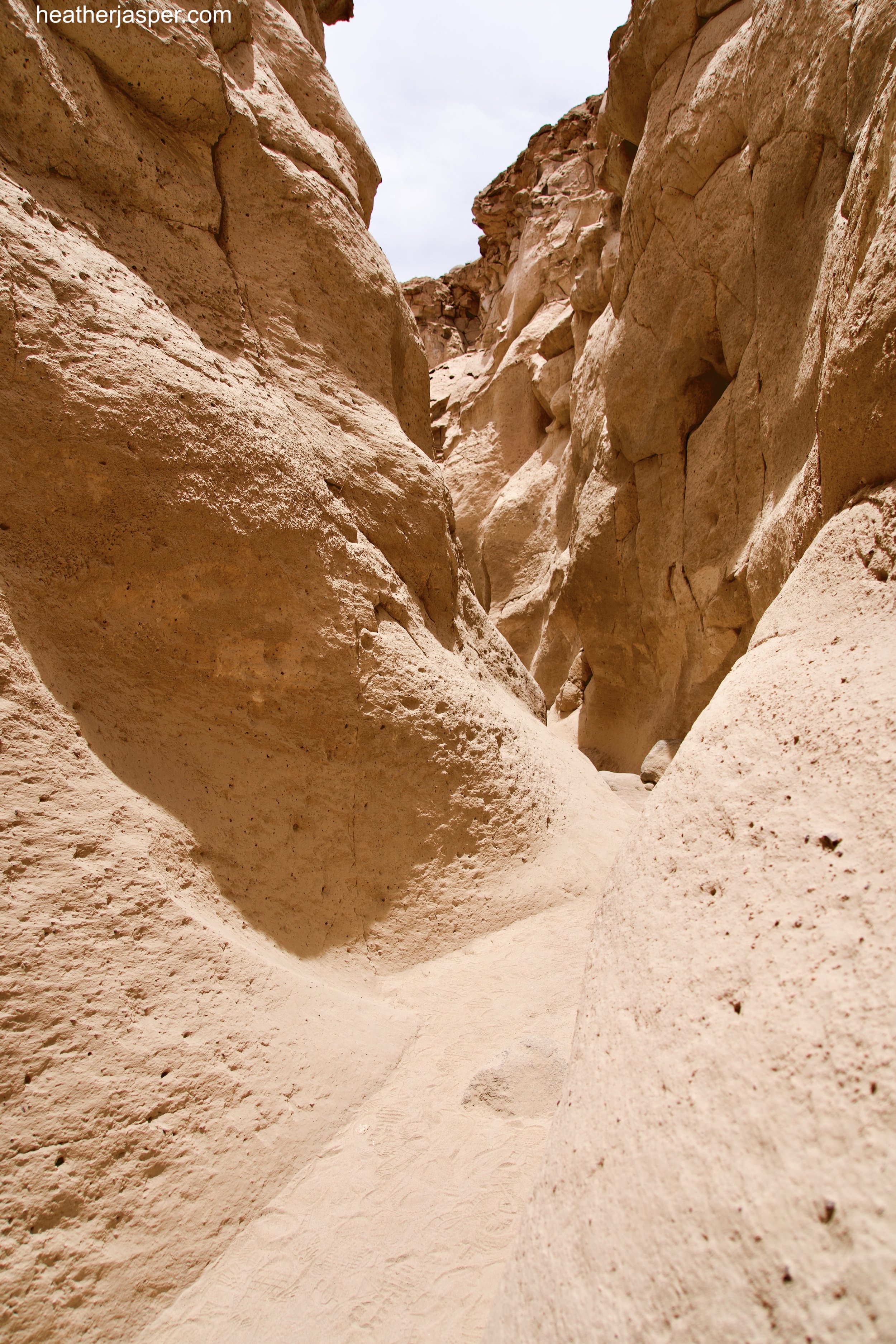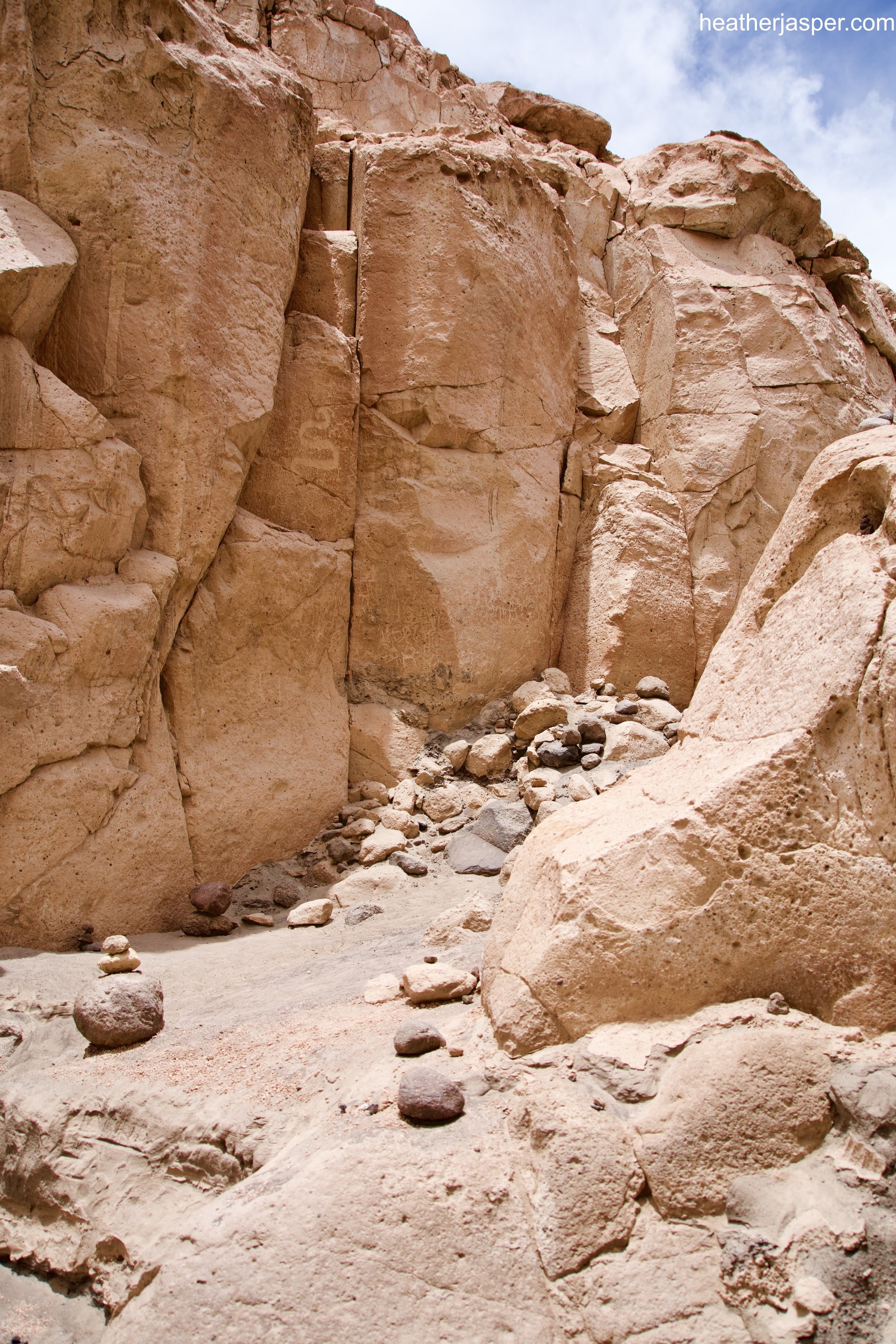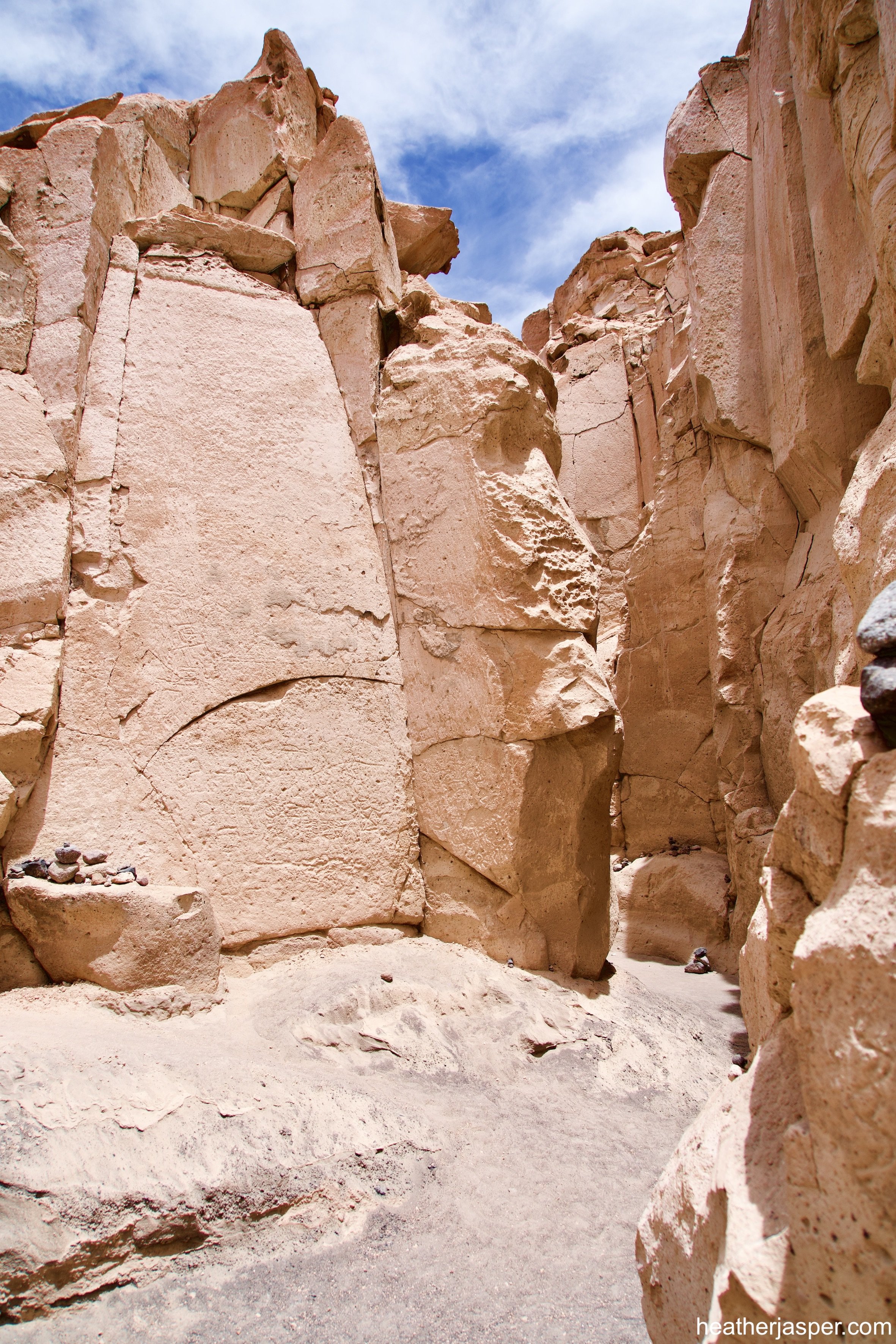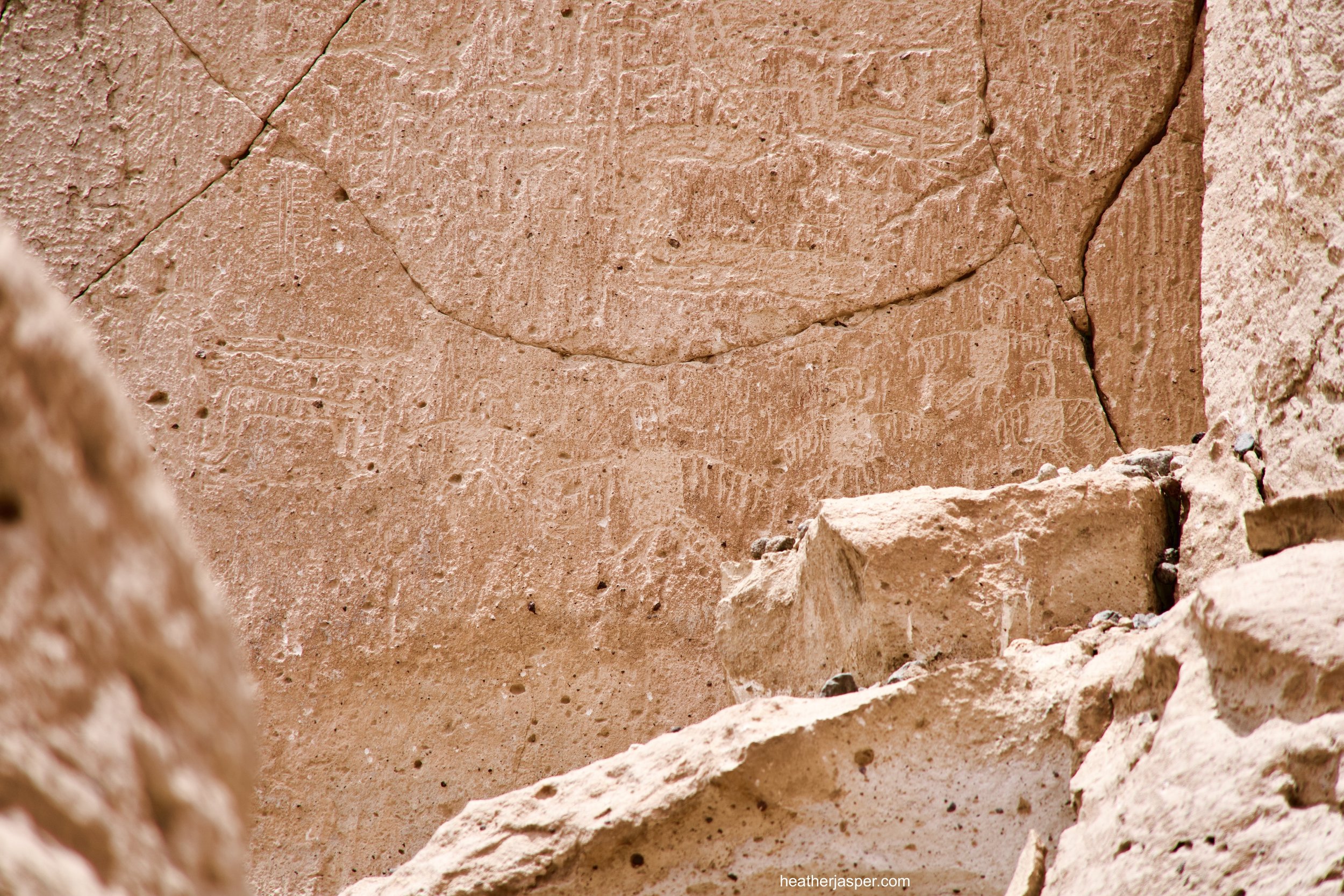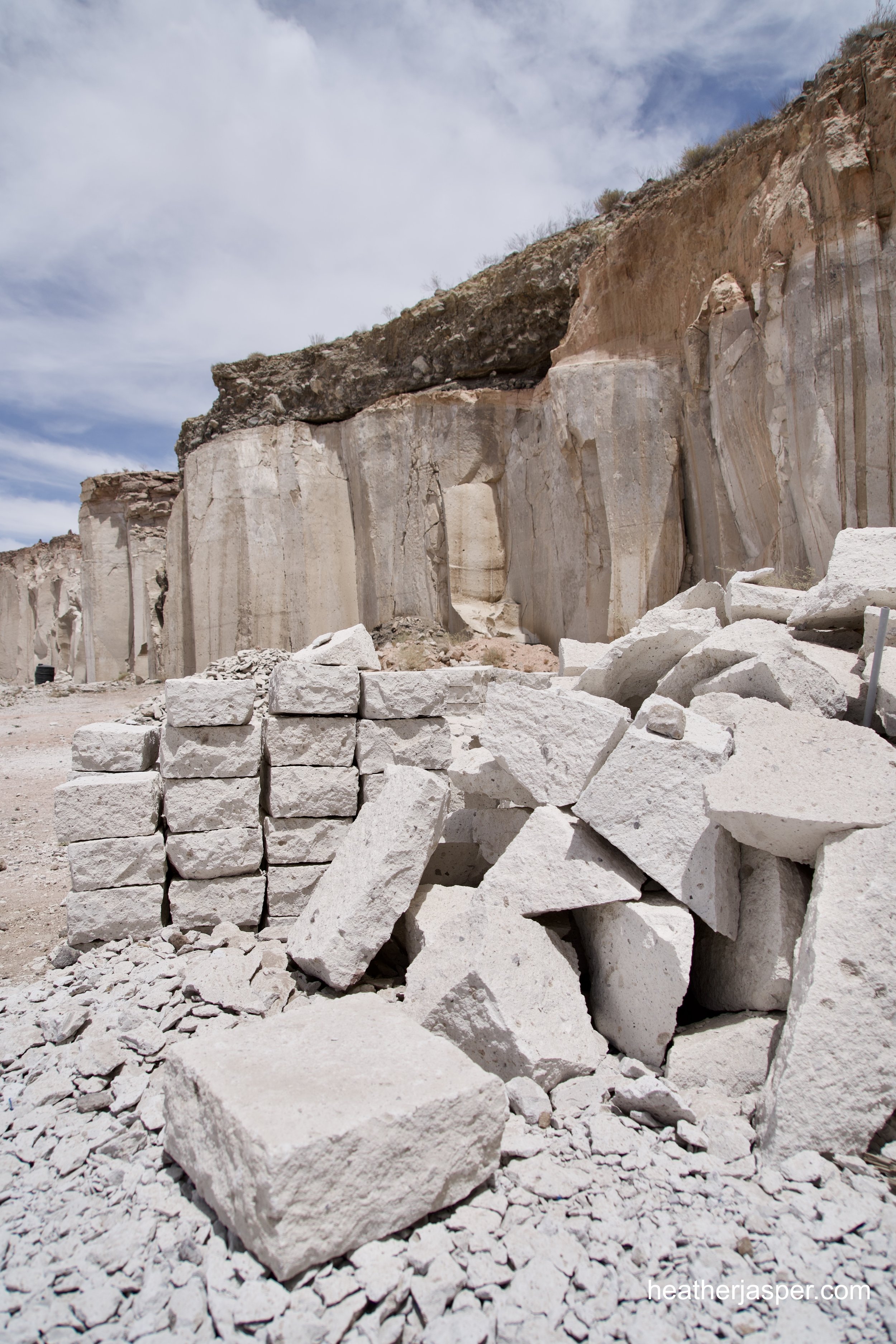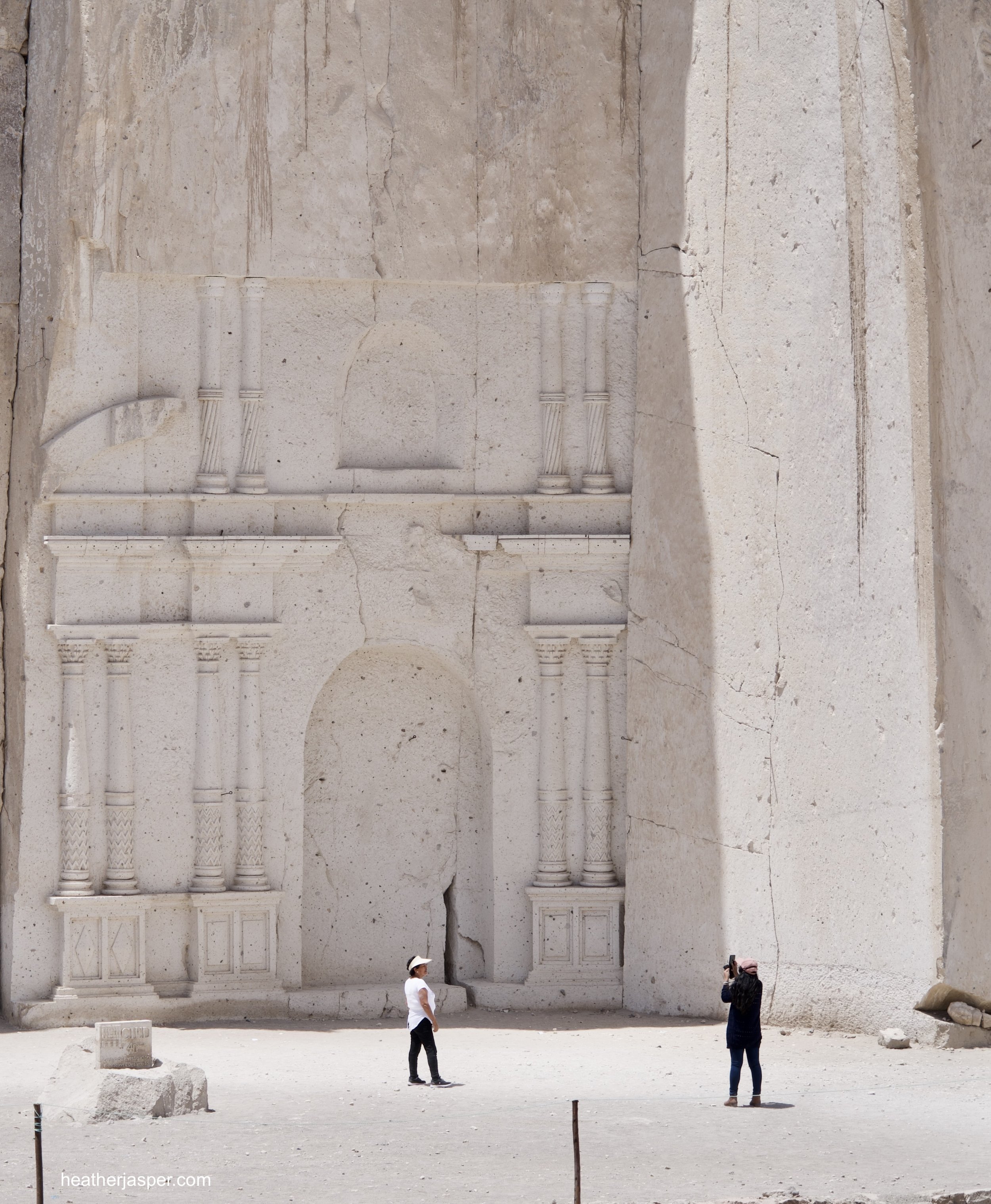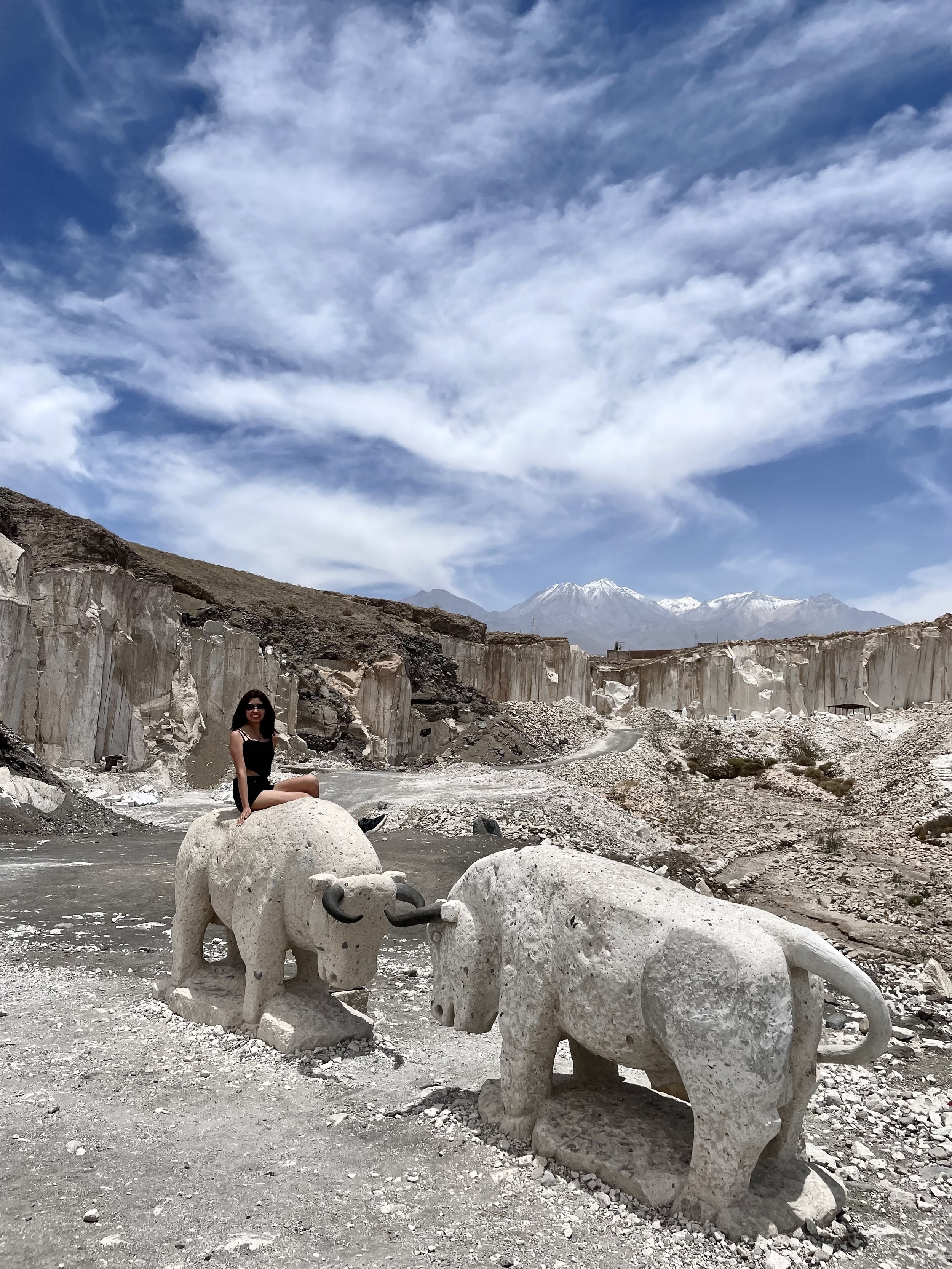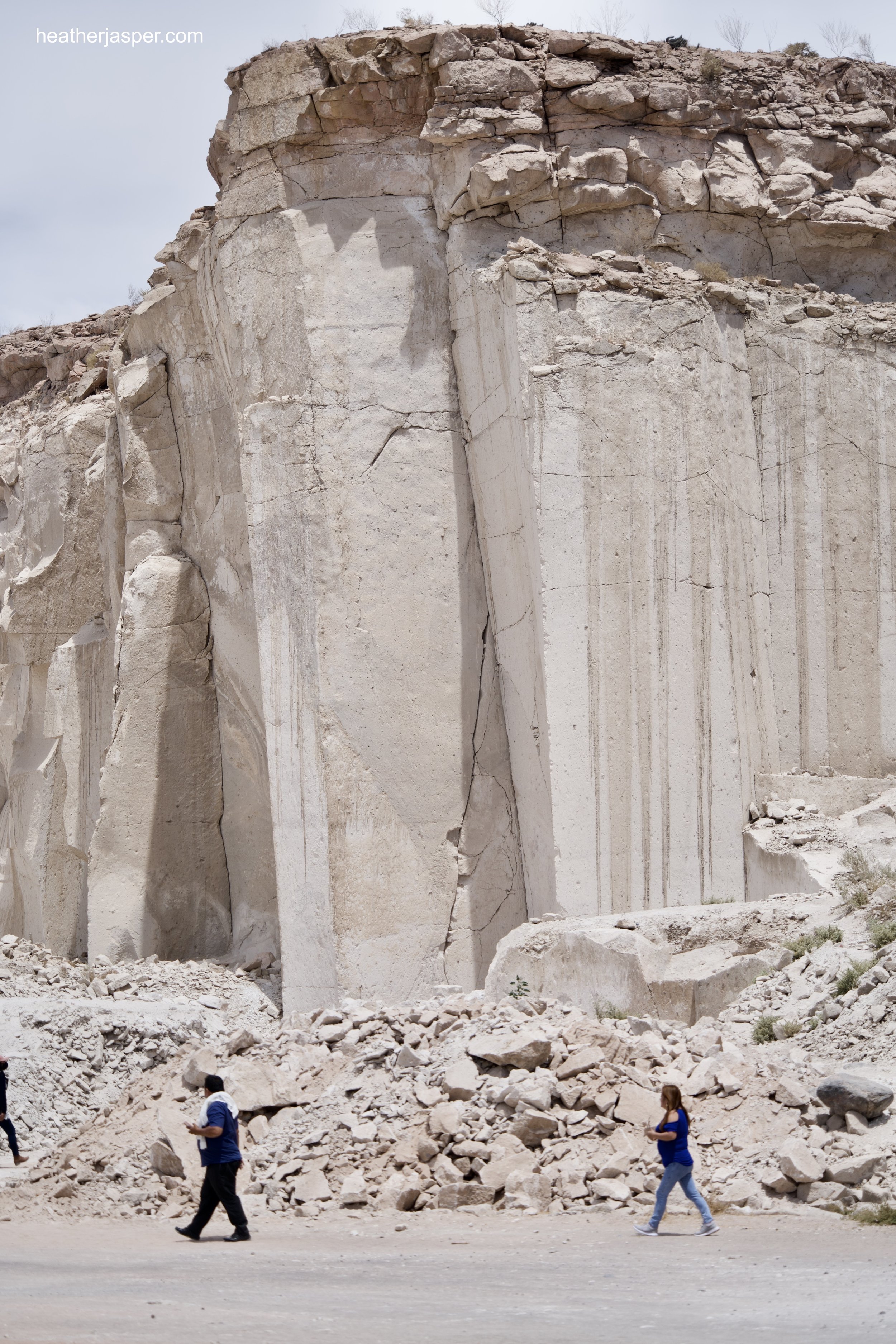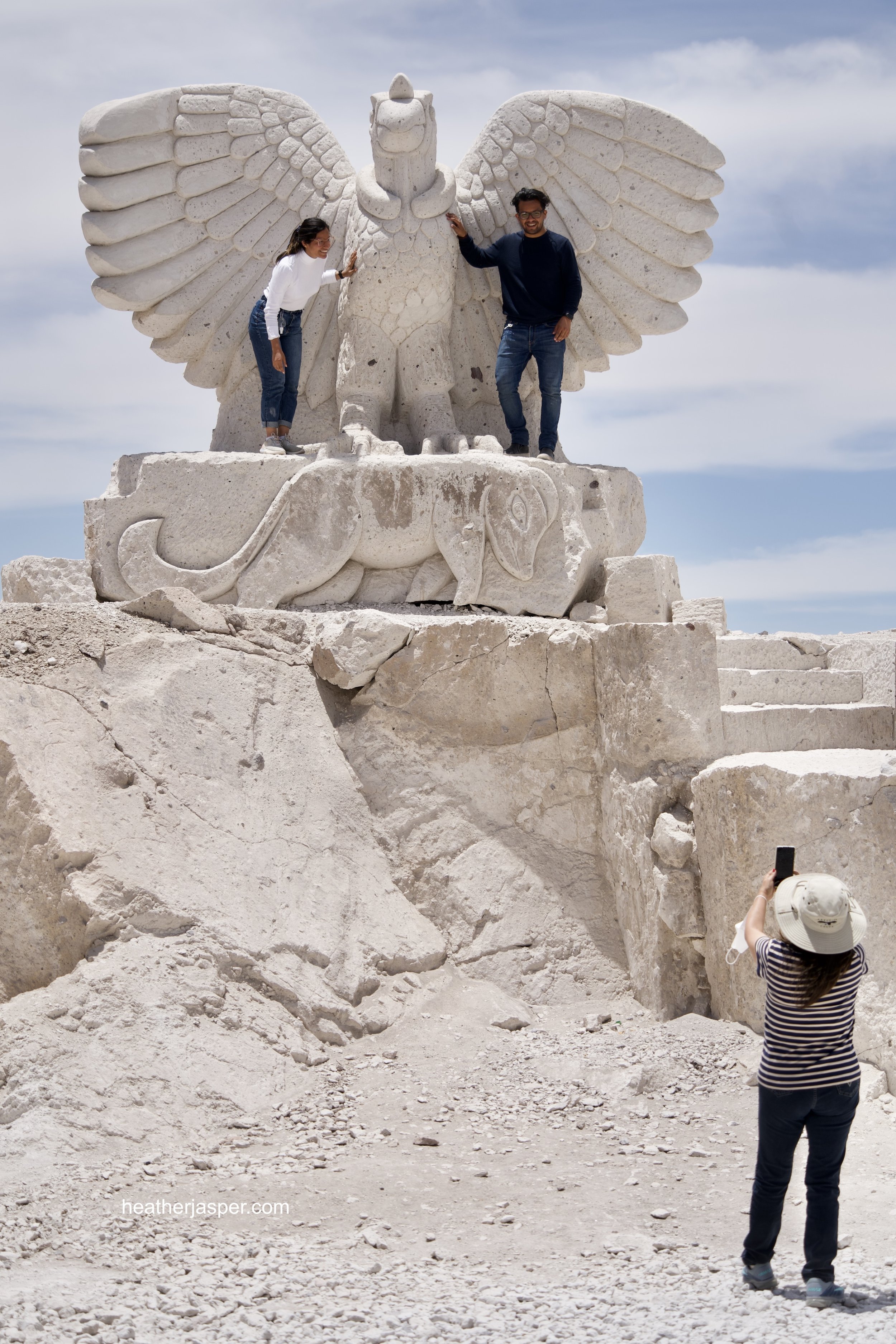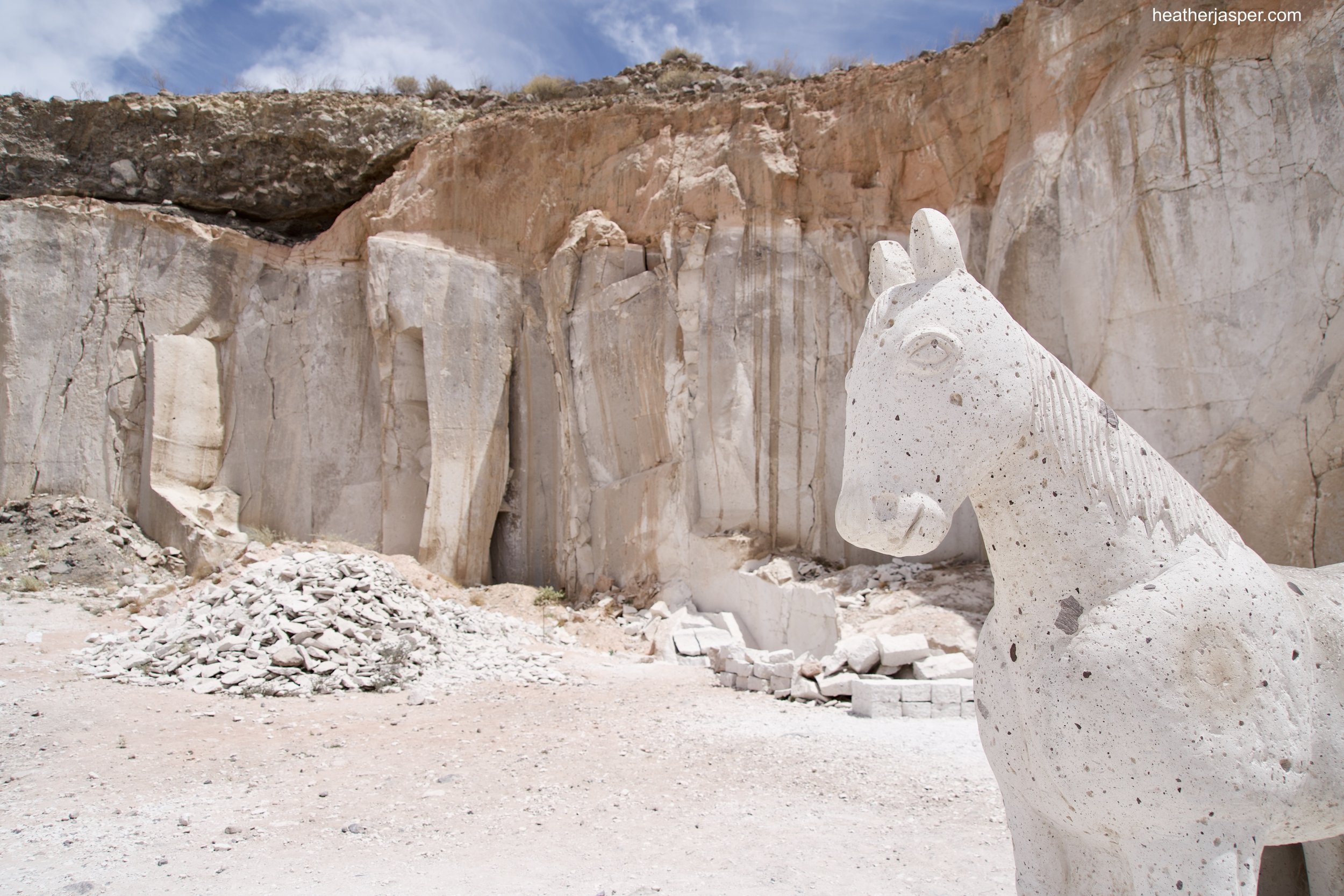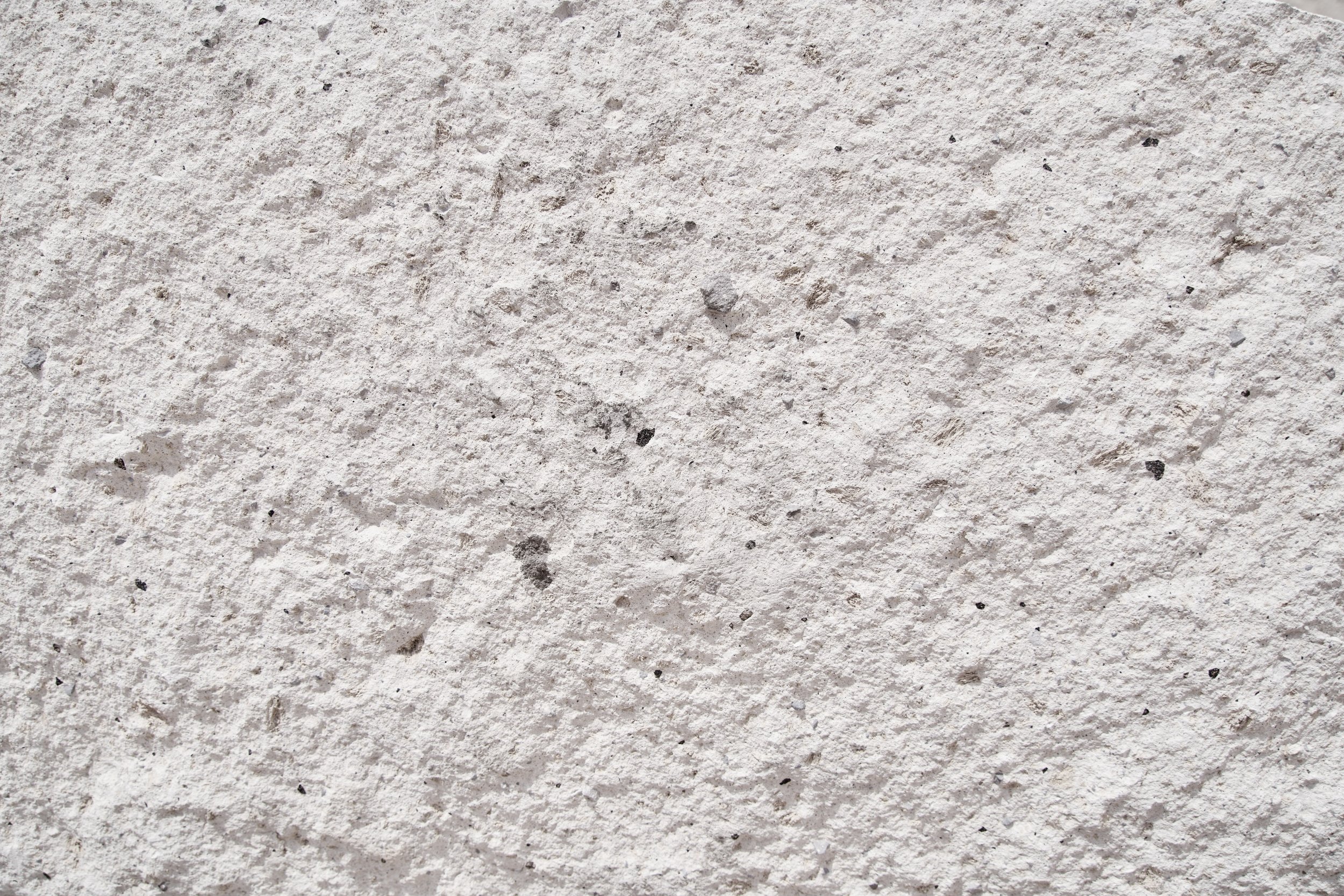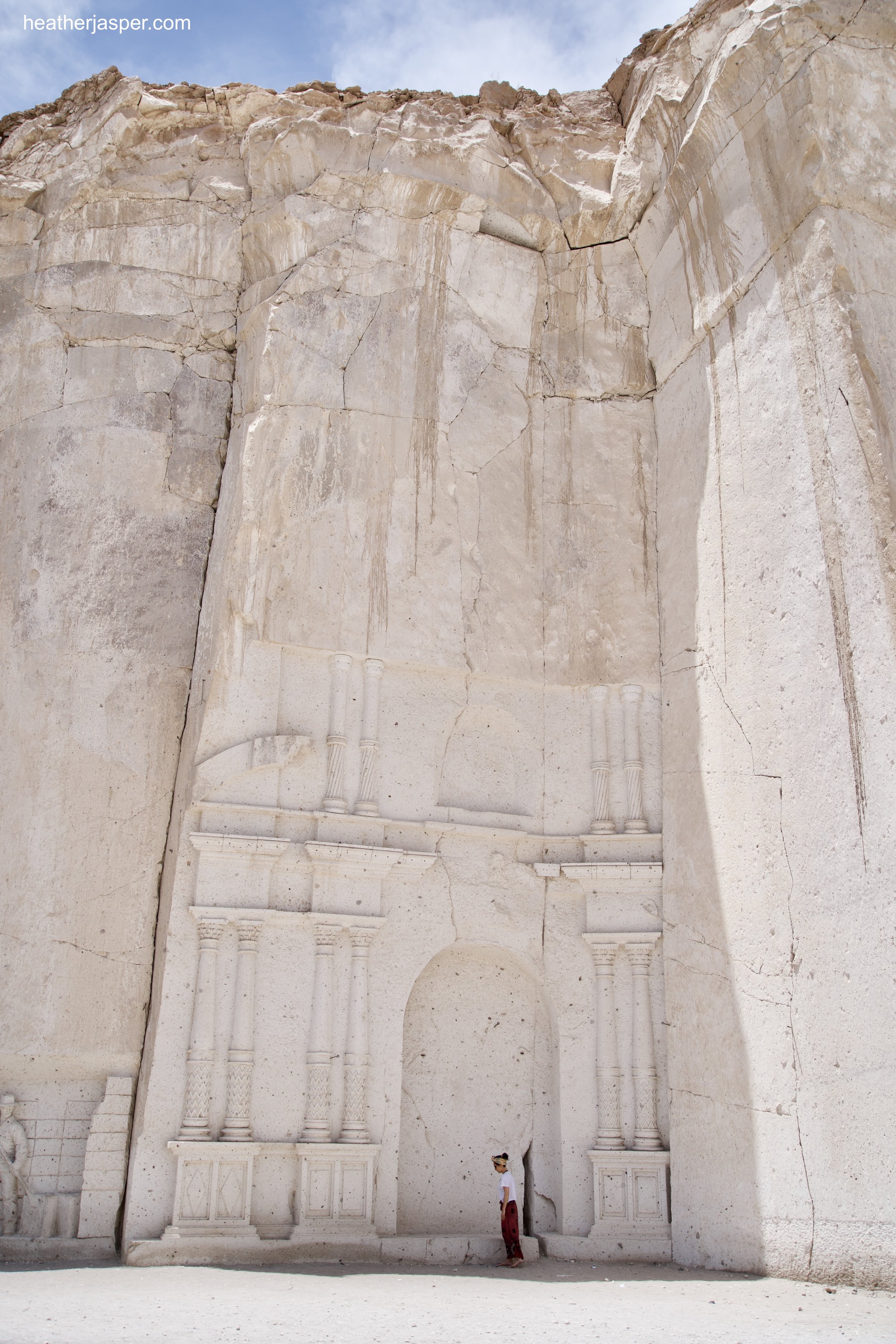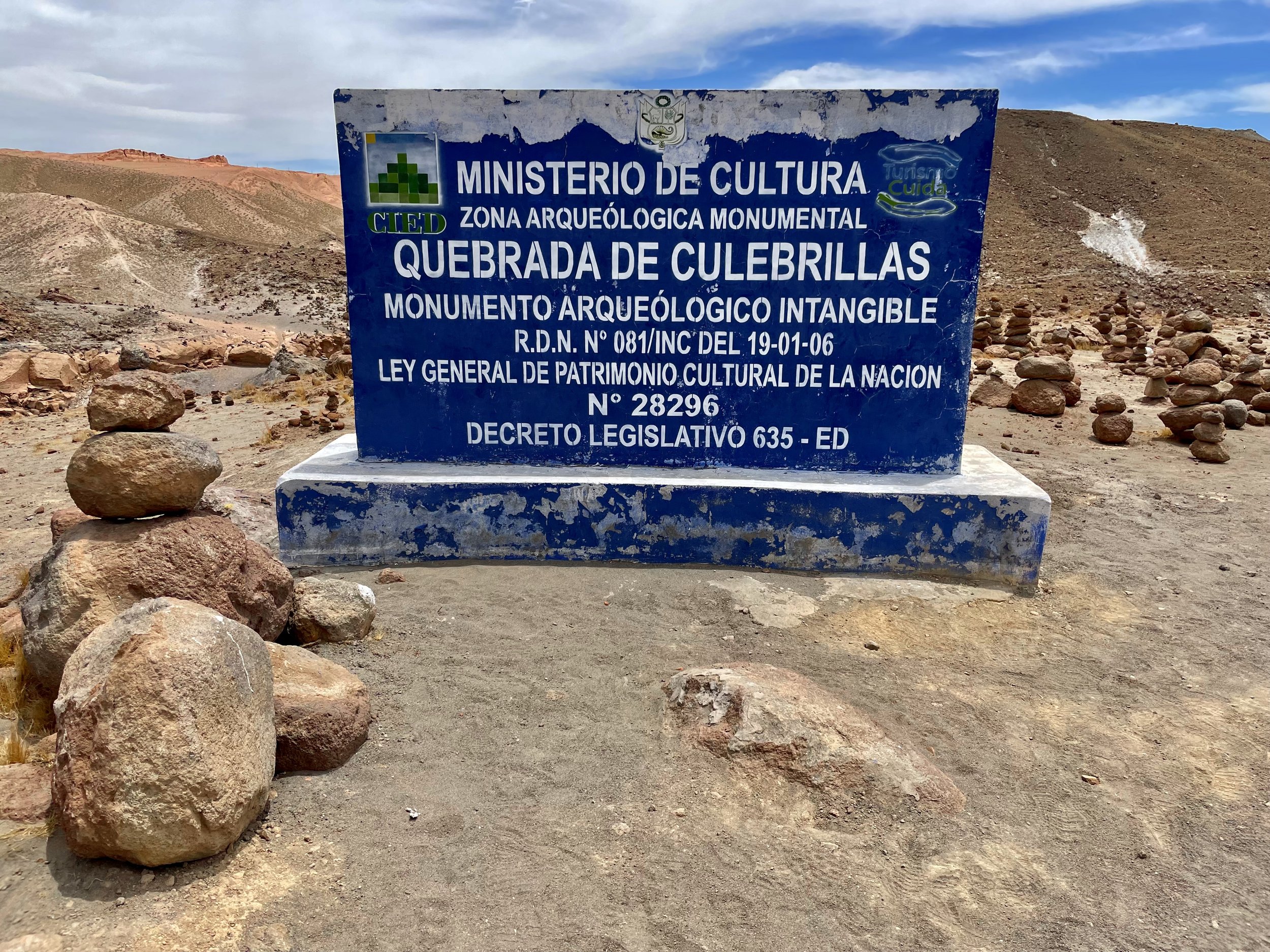Arequipa’s Ruta del Sillar
Arequipa is known as the White City because most buildings are made with “sillar,” blocks of volcanic tuff.
It’s easy to find a tour agency in Arequipa to sign you up for the Ruta del Sillar. It’s a half day tour and it cost me only s/30 (with the current exchange rate, that’s $7.40 USD). There are three stops on the tour. The first is in Arequipa, in a riverbed that’s dry most of the year. It’s where you have a good view of the volcanoes and the guide can explain about how the eruptions over the centuries have spewed a lot of ash into the surrounding area. There’s also “sillar” in the area so the guide can explain how the ash is compacted into tuff, which is a strong building material that is very resistant to earthquakes. Arequipa has frequent earthquakes and any building that’s over two stories high (like the cathedral) has been rebuilt many times because it has been damaged or destroyed in earthquakes over and over.
The second stop is the quarry where you pay a s/3 entrance fee. There are also workshops and other places that you can enter for an extra s/1. The guide explained that selling “sillar” and statues doesn’t actually earn enough to make a living these days, and that the people who have developed the quarry for tourism charge extra to make it worth their time. It’s interesting to watch people work but what most tourists are there for are the photo ops. The most popular is the façade of the Arequipa cathedral carved into a cliff face. It’s only one of several places that are clearly made for people to take photos. It’s a great place if you like to post to social media. On a practical note, there are several people who sell drinks and snacks. You should bring water but if you didn’t, you can certainly buy it there. You should also bring bug spray. I happened to be there on a windy day, which discouraged the bugs, but there are biting flies there whose bites are much worse than mosquitoes. There are also three points through the quarry with bathrooms. The ones I used were very clean and stocked with both toilet paper and soap. There was no extra fee for the bathroom like in many other touristy places in Peru. There isn’t any shade, so plan for both sun and dust. I’m going to state the obvious that a quarry in a desert is very, very dusty.
Quarry decorations
This is the façade of the cathedral in Arequipa, but it reminds me more of Petra. This was by far the most popular place for people to take photos and definitely one of the biggest reasons to do the Ruta del Sillar tour.
Queso helado
Every plaza, and apparently every quarry, in Arequipa has at least one woman with a wood barrel selling queso heldado. It’s basically ice cream, but has a slightly different texture and flavor. It’s definitely worth trying when you’re in Arequipa. You can usually recognize the vendors by their traditional skirts and aprons. I never saw a man selling queso helado, so I don’t know if they have some kind of traditional outfit also.
Quebrada de Culebrillas
This is a mini-canyon that clearly used to have running water, though it could have been centuries ago. The tour takes you down into the uphill end of the canyon and you walk through to an area with petroglyphs. The van will drive around to pick you up at the exit from the petroglyphs.
The third stop is the Quebrada de Culebrillas.
Here you will be glad to have good walking shoes. It’s a short walk but there are a couple short scrambles down over rocks which would make anything like high heels very impractical. It’s a fun walk through the canyon, which takes about half an hour if you’re stopping to take photos along the way. If you were walking quickly to get through it would probably only take 15 minutes. It’s an easy, mostly flat walk that goes slightly downhill. The petroglyphs at the end aren’t very obvious, unless you know where to look. They’ve been worn down by the centuries but still clearly show snakes, for which the canyon is named. There are also condors, recognizable by the collar. There are a few foxes and mammals, but they’re not as well done or as easy to identify. This was actually my favorite part of the tour and I think I would have felt it wasn’t worth the time if we had only seen the quarry. Including the Quebrada de Culebrillas definitely made the morning much more interesting for me.

